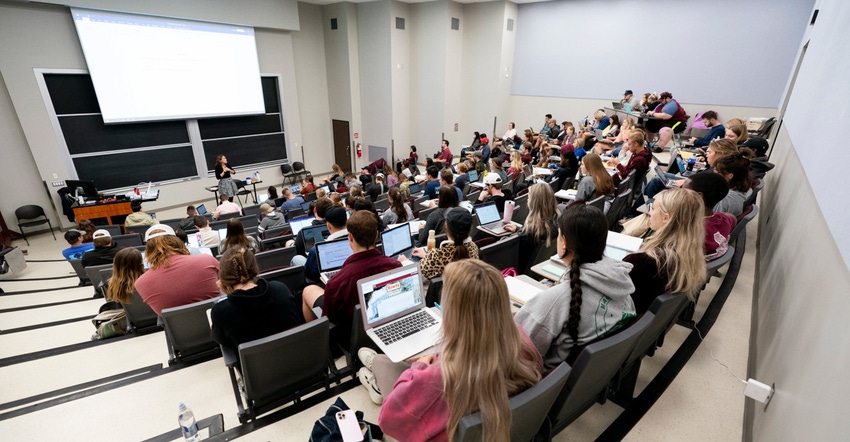May 5, 2022

Agriculture teachers are in high demand as a number of contributing factors are making it difficult to fill positions in classrooms across Texas and abroad, according to experts.
Offering real-life experiences and exposure to the immense variety that is Texas agriculture, Texas A&M University‘s Department of Agricultural Leadership, Education and Communications is striving to help fill those positions by continuing to prepare students for careers as agricultural educators.
 Gary Briers, Department of Agricultural Leadership, Education and Communications at Texas A&M University. (Texas A&M AgriLife photo)
Gary Briers, Department of Agricultural Leadership, Education and Communications at Texas A&M University. (Texas A&M AgriLife photo)
“There’s such a tremendous demand that we just can’t keep up with it,” said Gary Briers, Bryan-College Station, who has seen much transition throughout his teaching career at Texas A&M since 1980. “It’s difficult to get people to be public school teachers these days, and COVID-19 didn’t help any. It’s caused a wreck in a sense, in terms of filling open positions.”
Addressing the shortage
In 2020, a bulk of national agricultural teachers retired, resulting in a loss of 17.5%, according to an American Association for Agricultural Education National Agricultural Education Supply and Demand Study. But there’s also growth in suburban areas that’s driving the need to service more school districts with teachers.
Briers said he’s seen this trend before, but not to this extent.
“This was all building before COVID hit,” he said. “At one time we had an excess of teachers. The problem today is we have kids who have several opportunities. They go interview for a job and they are offered a position on the spot.”
Briers said the suburban program area of Texas is by far the fastest-growing, primarily where students have had a grandparent, aunt or uncle who was involved in production agriculture, knew of other students exhibiting livestock or were active in agricultural associations.
“They see that and say ‘I want to be a part of that’,” Briers said. “Look at Katy ISD. That has gone from two high schools beginning in my early career days to now 10 high schools with a broad ag sciences program and 40 teachers in the school district. They have two or three fulltime teaching veterinary applications. Students are pouring in. They may not want to be veterinarians, but they love livestock, dogs, cats or perhaps see opportunities to transfer that knowledge into human medicine.”
Briers said he saw the same scenario with horticulture “when it was relatively new in our public secondary schools 30 years ago.”
“Now that has transferred into floral design and the study focus has broadly expanded. It’s like the late Dr. Joe Townsend said, agriculture is more than just sows, cows and plows.”
Real-life experiences
Part of the ALEC curriculum includes more real-life experiences. When students graduate from the department, they are armed and ready with a license to teach, Briers said.
“But we tell them to avail themselves to gain more skills,” he said. “We are offering Saturday workshops where they will be learning or teaching students in our preparatory program. For some who never have pulled a trailer or hooked up a trailer, we give them those experiences of backing a trailer, navigating through cones. We also have a lot of opportunities at the RELLIS Campus at the Agricultural Workforce Complex in conjunction with our own ag mechanics laboratory.”
Briers noted that the Department of Animal Science and Department of Poultry Science are providing hands-on opportunities with its cattle, sheep, goat and poultry laboratories.
Looking to the future, Briers said he’s hopeful that elementary schools will continue to adopt other agriculture- or horticulture-related activities such as establishing school gardens.
“It’s going to take someone like an ag teacher or FFA chapter to be the champion to do that,” he said.
Source: is AgriLife TODAY, which is solely responsible for the information provided and is wholly owned by the source. Informa Business Media and all its subsidiaries are not responsible for any of the content contained in this information asset.
Read more about:
Agriculture LeadershipAbout the Author(s)
You May Also Like




